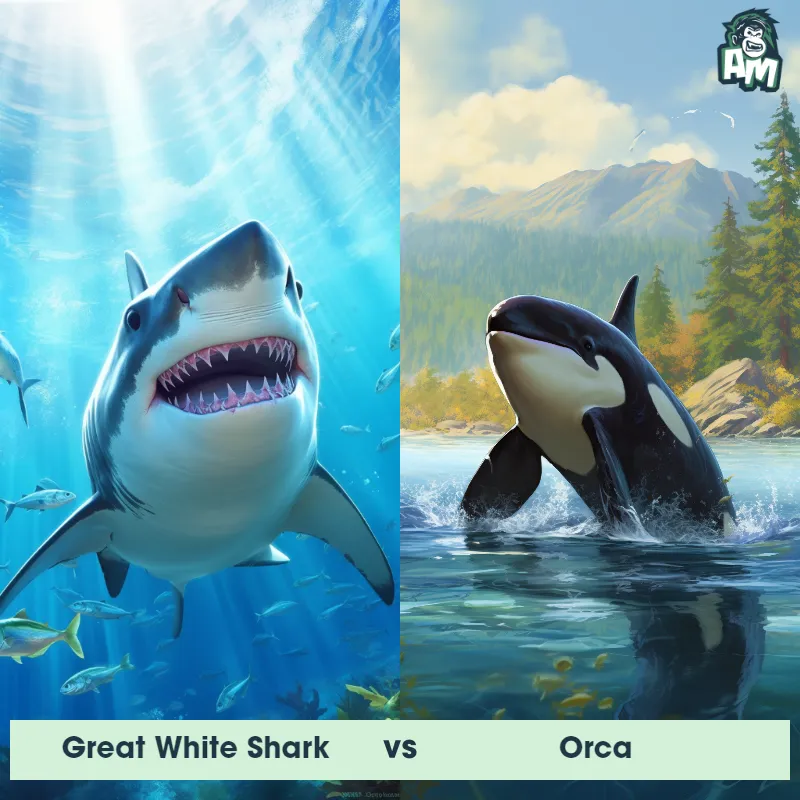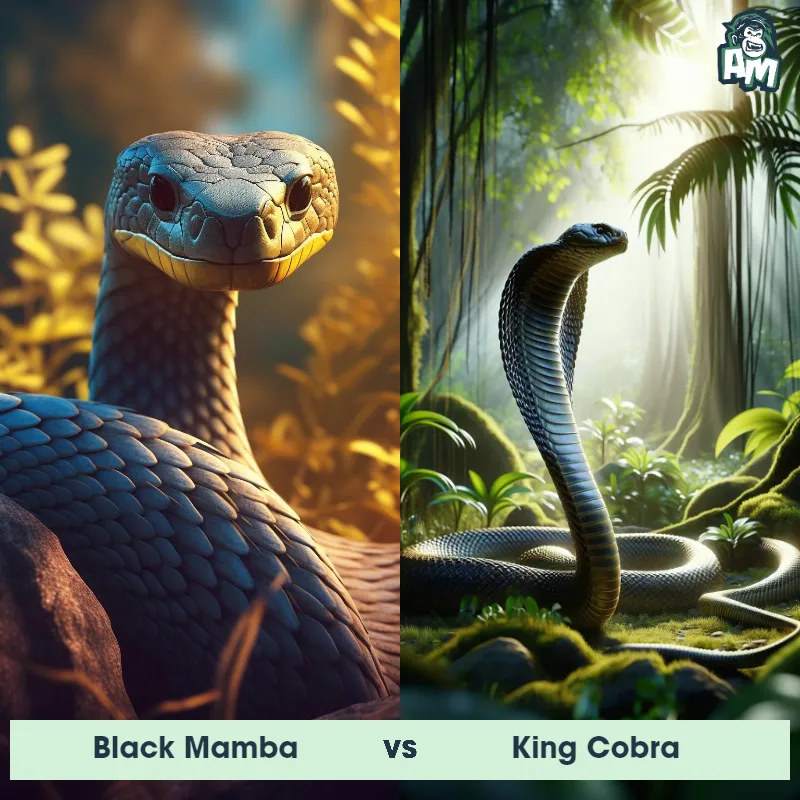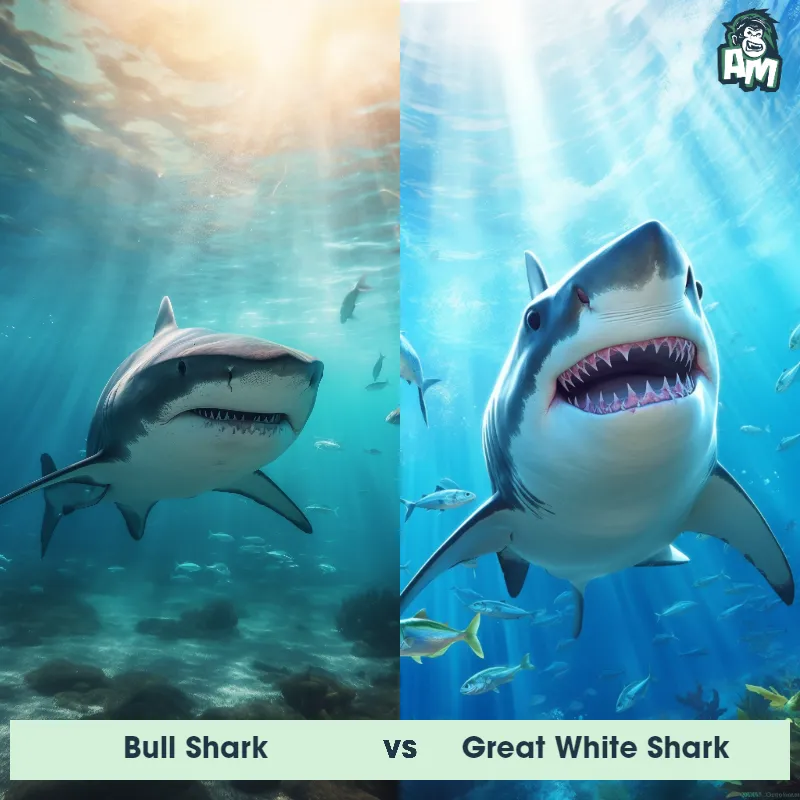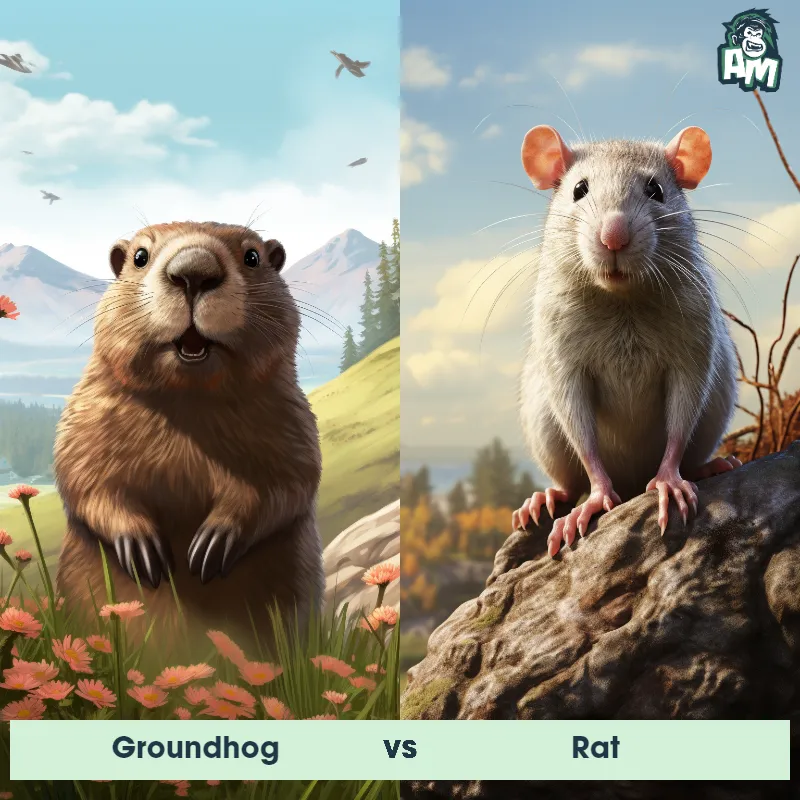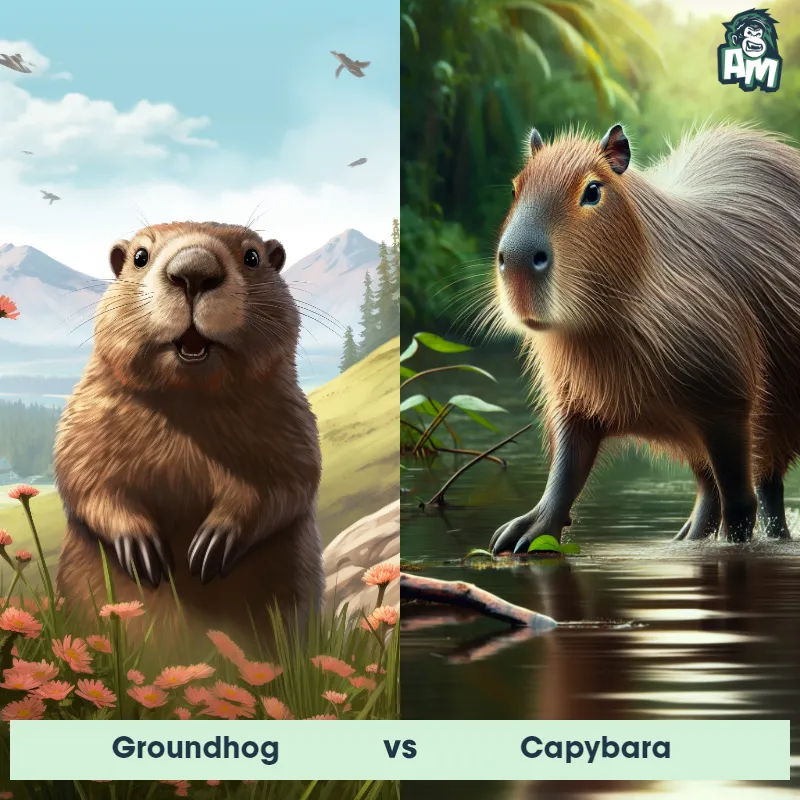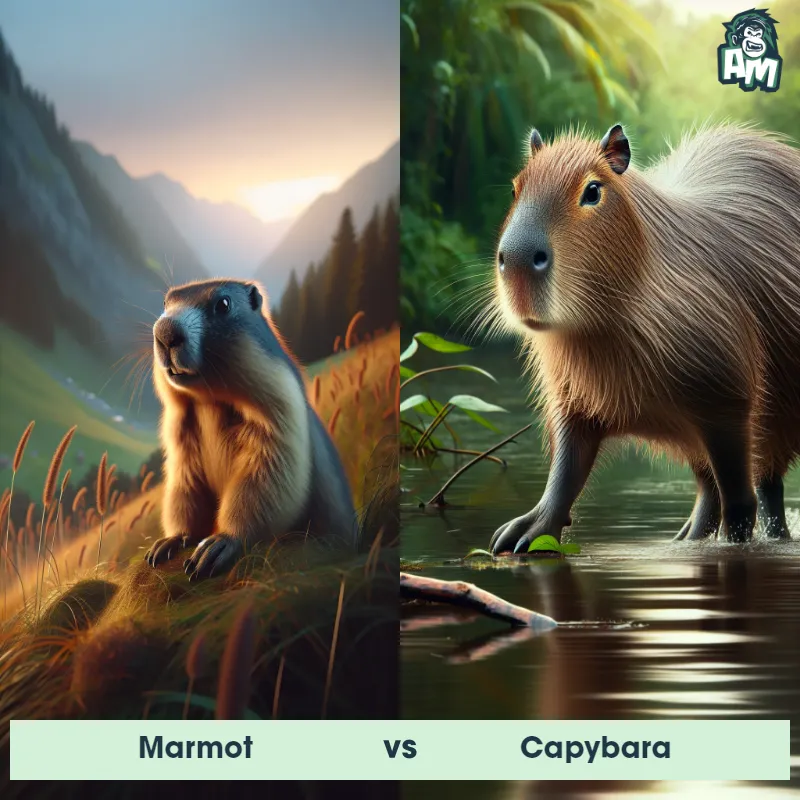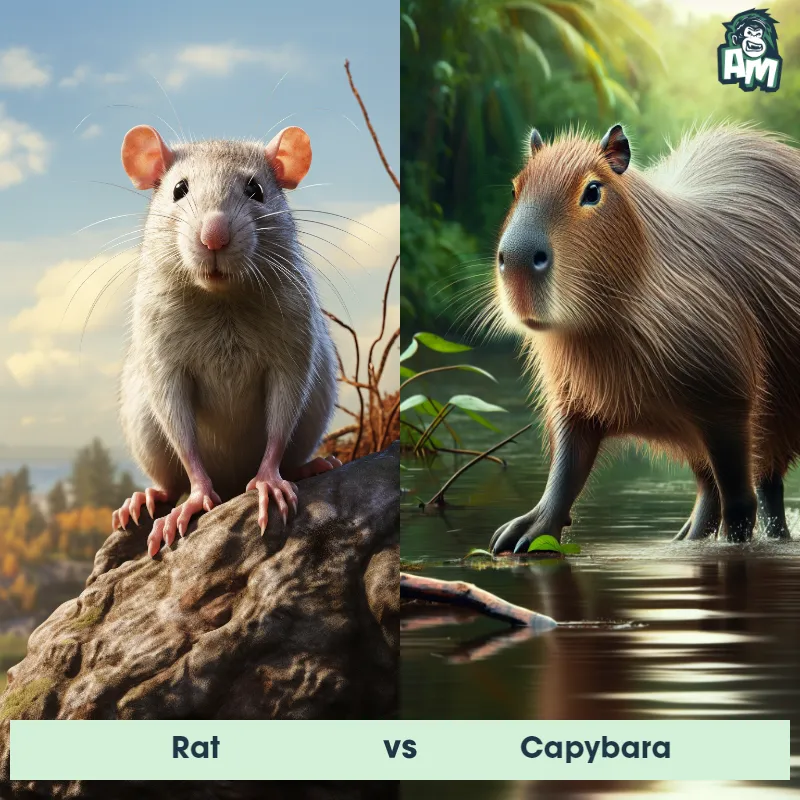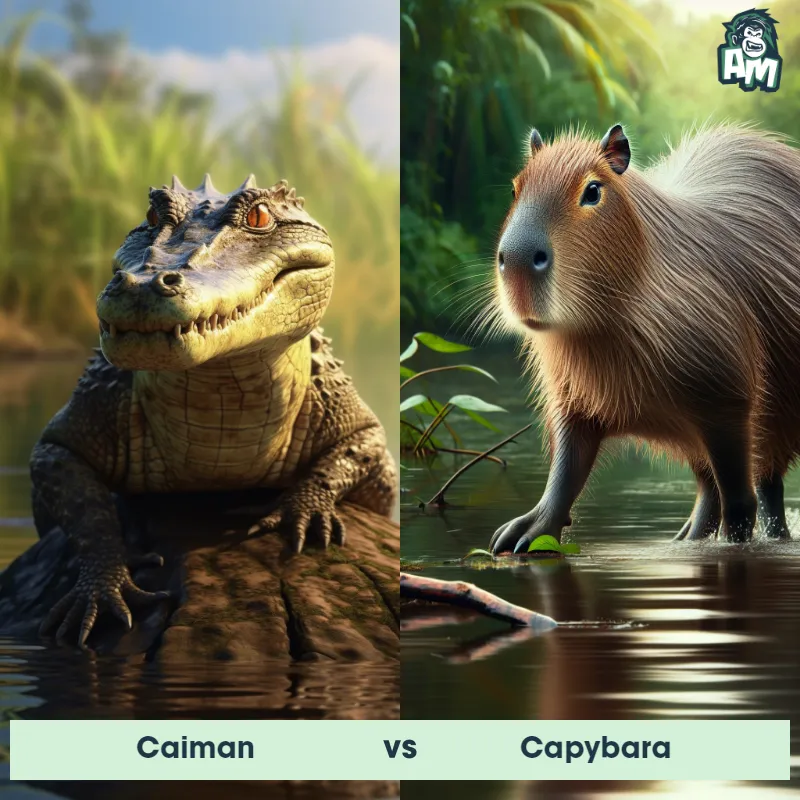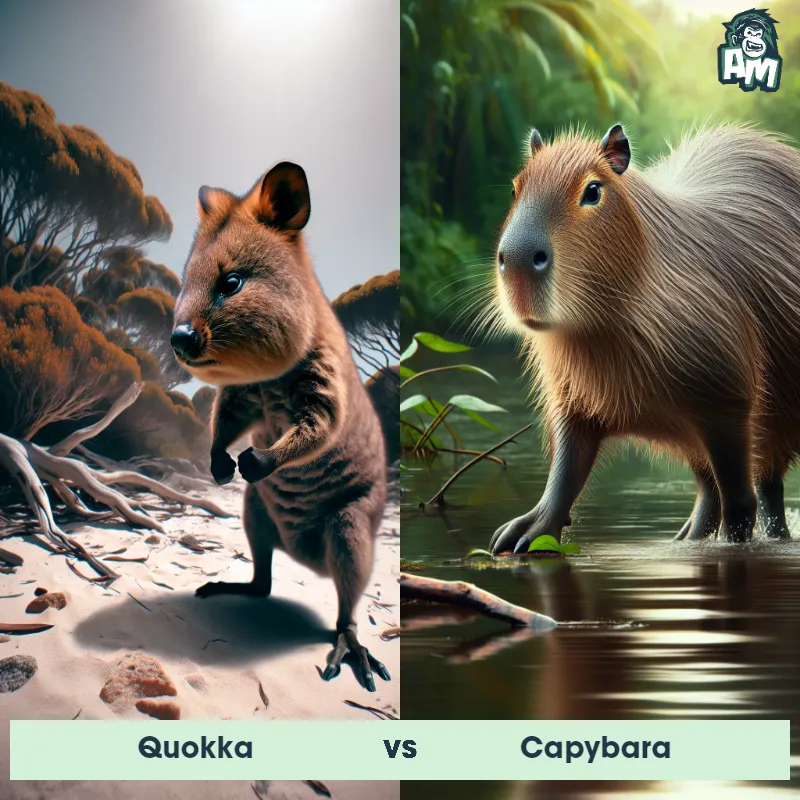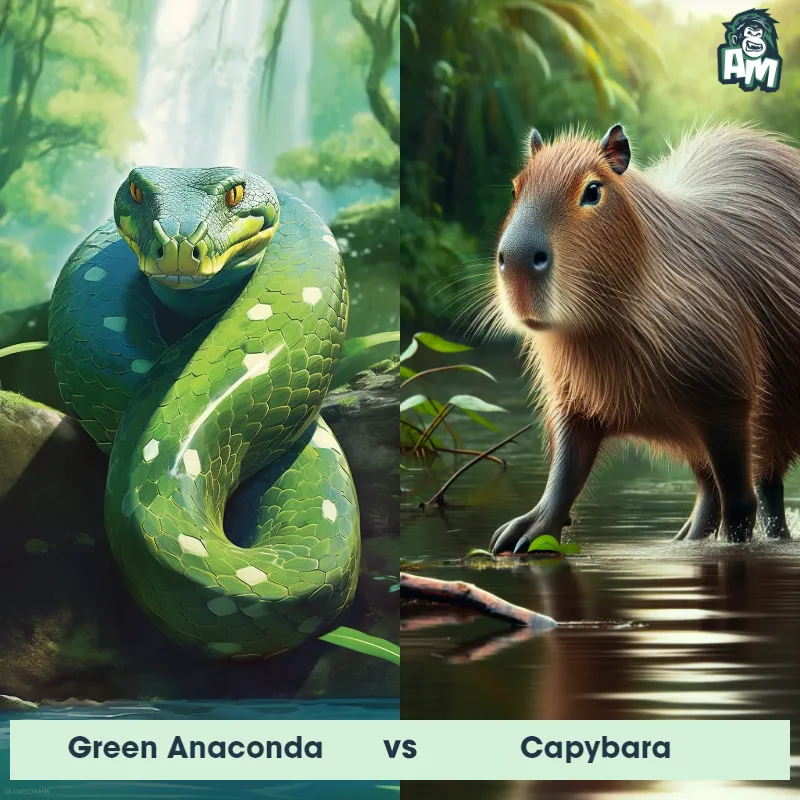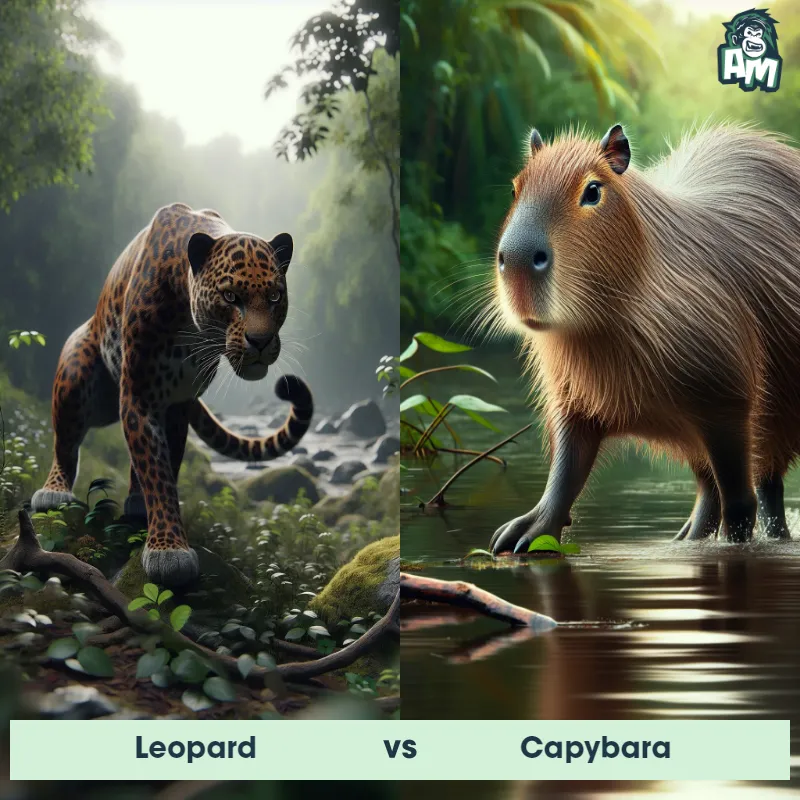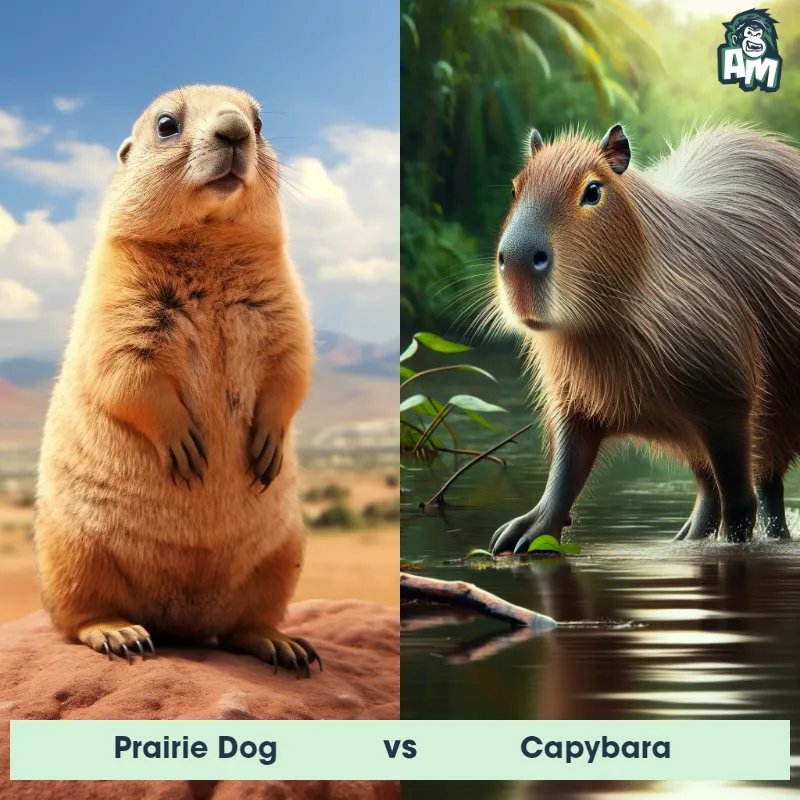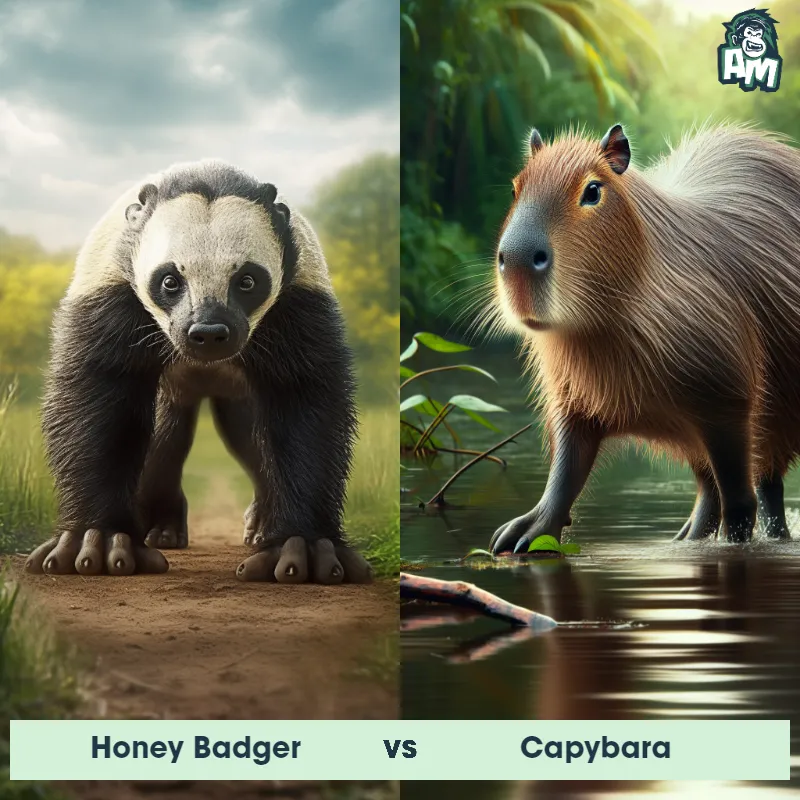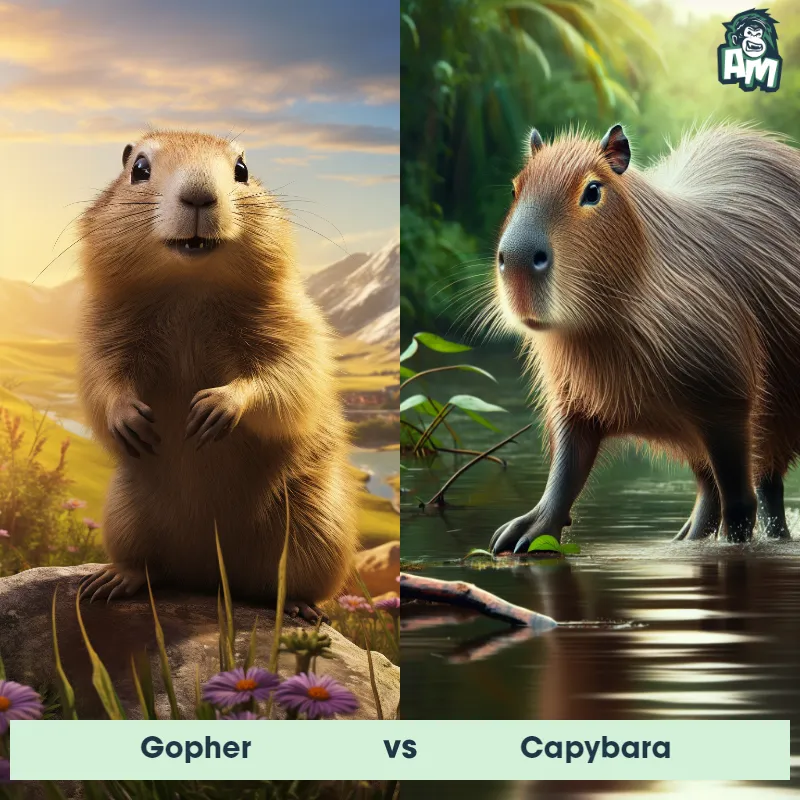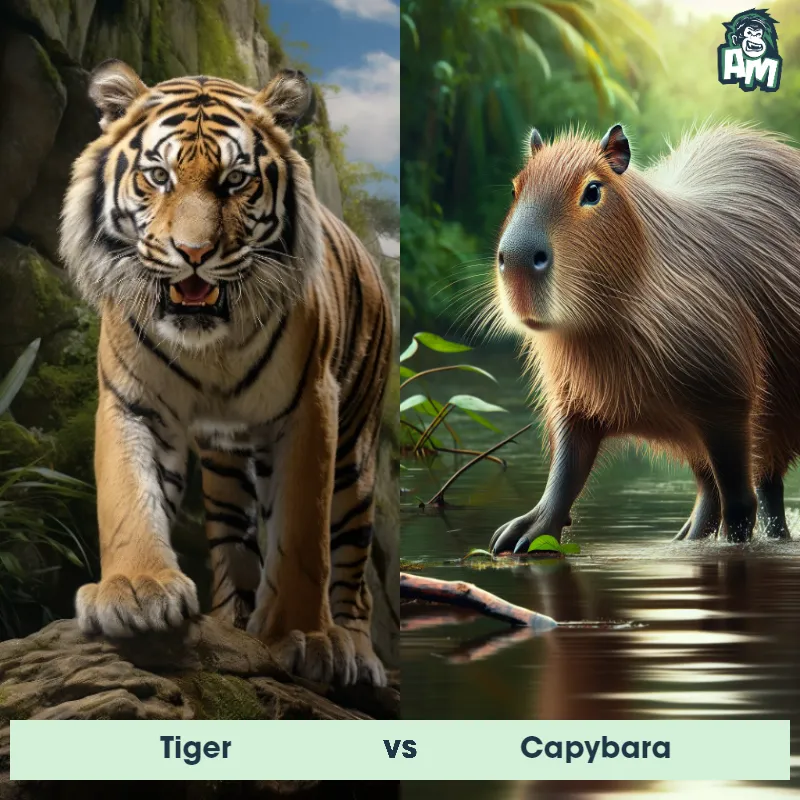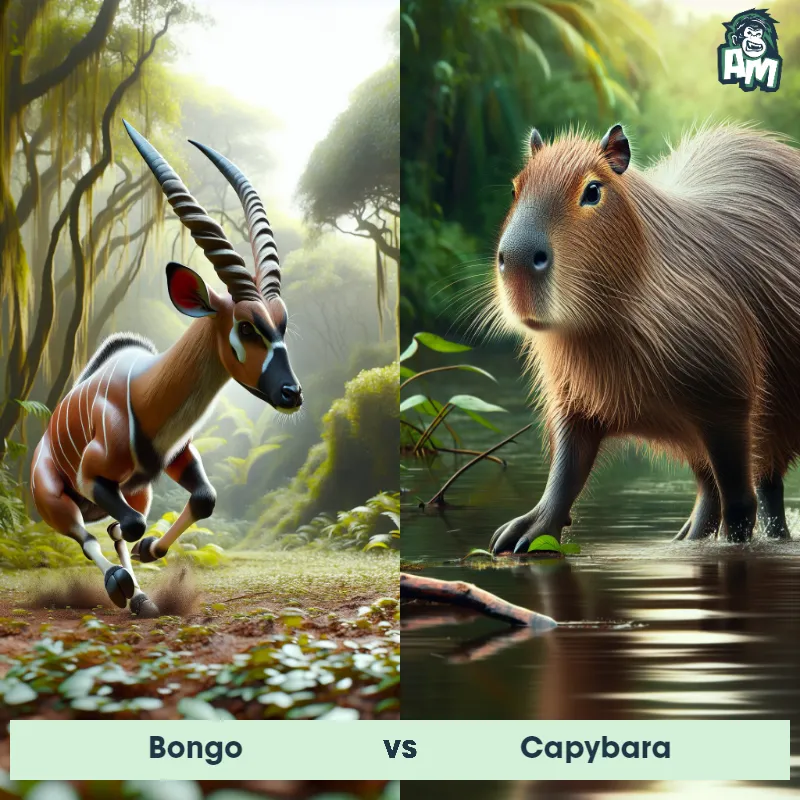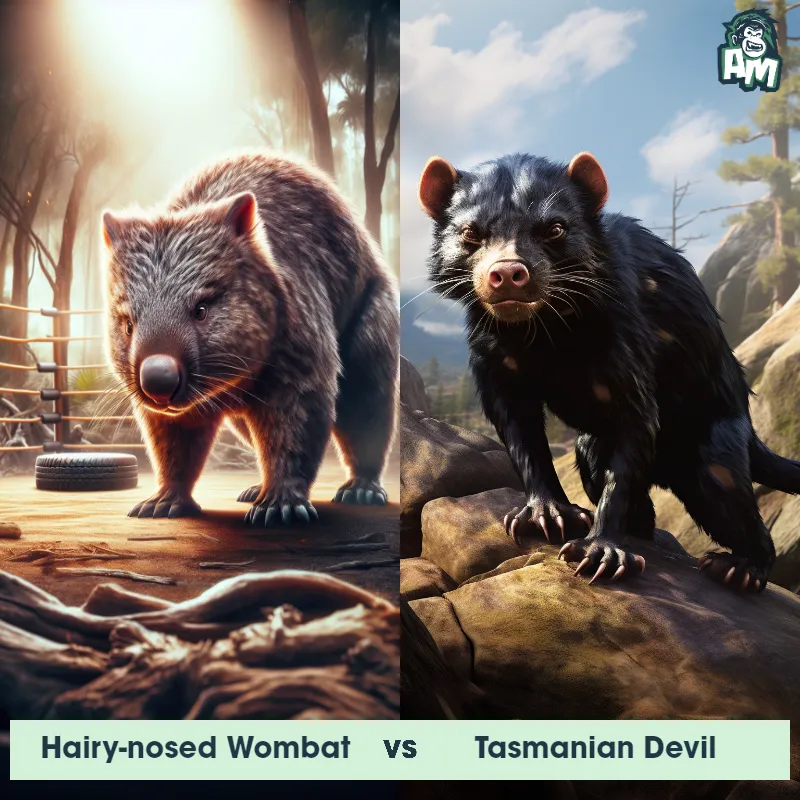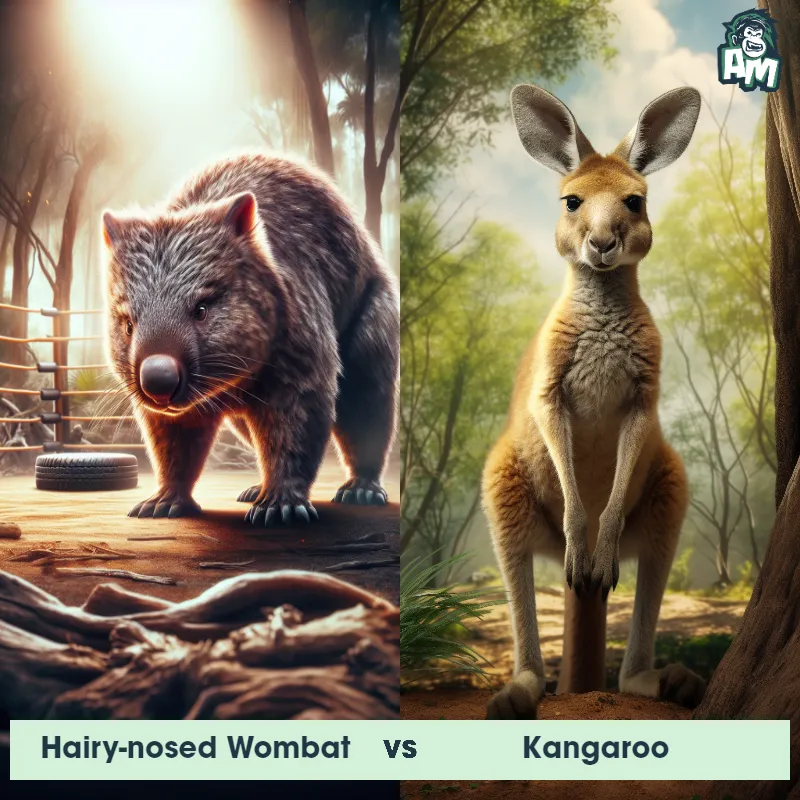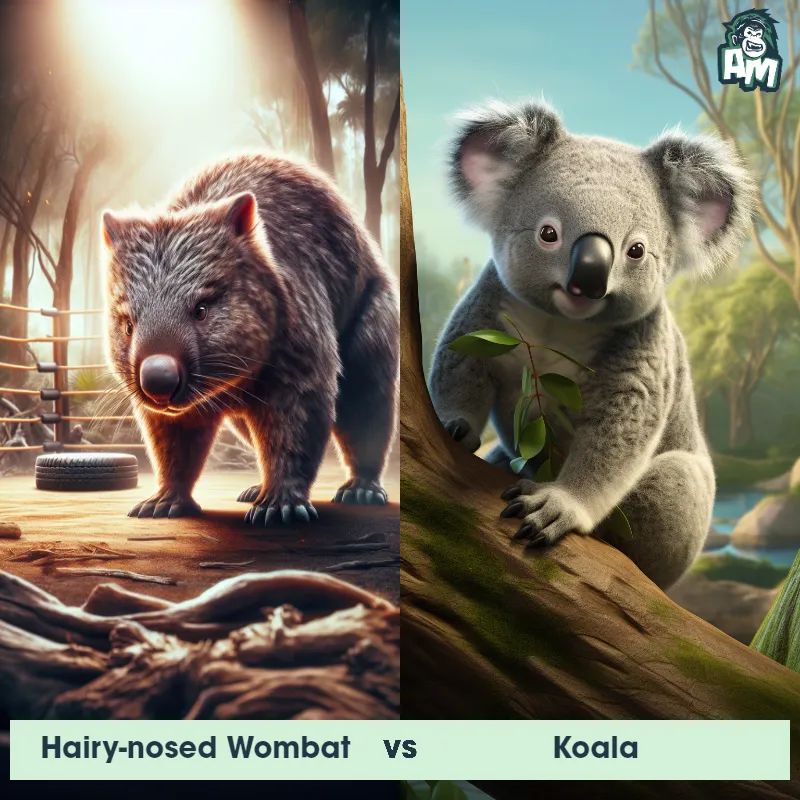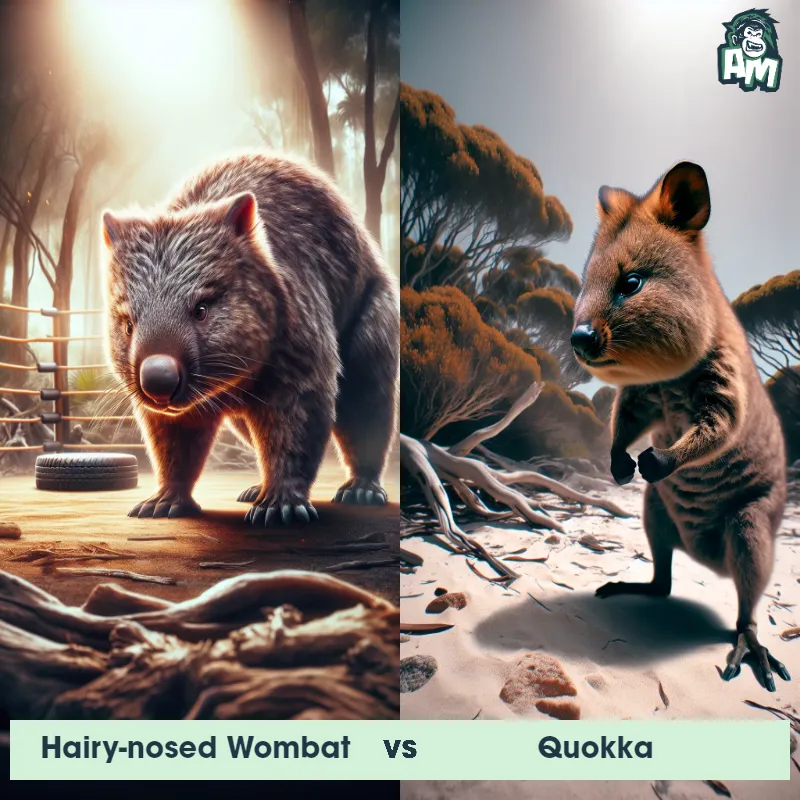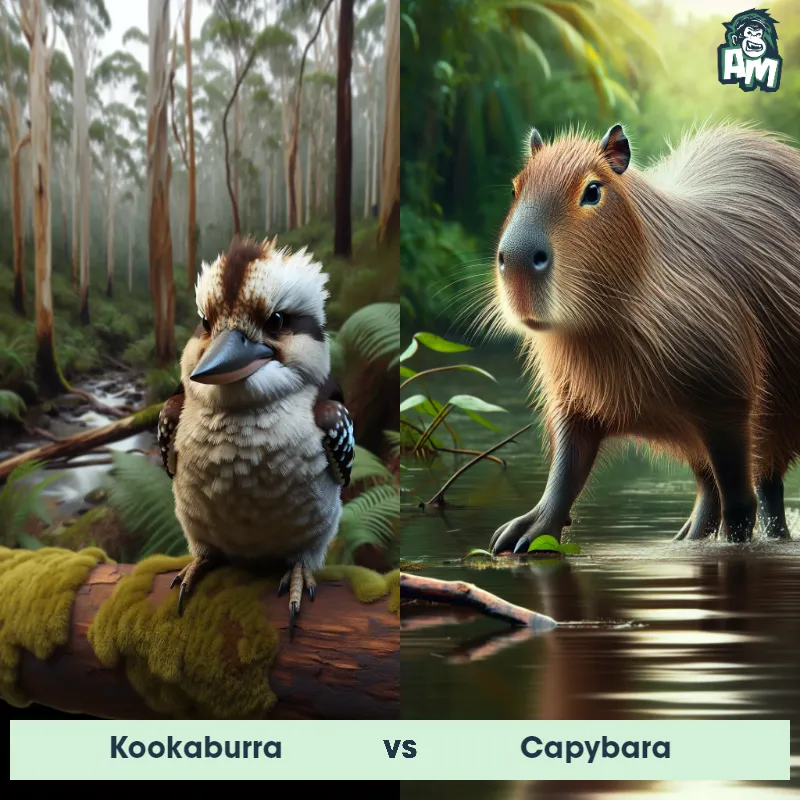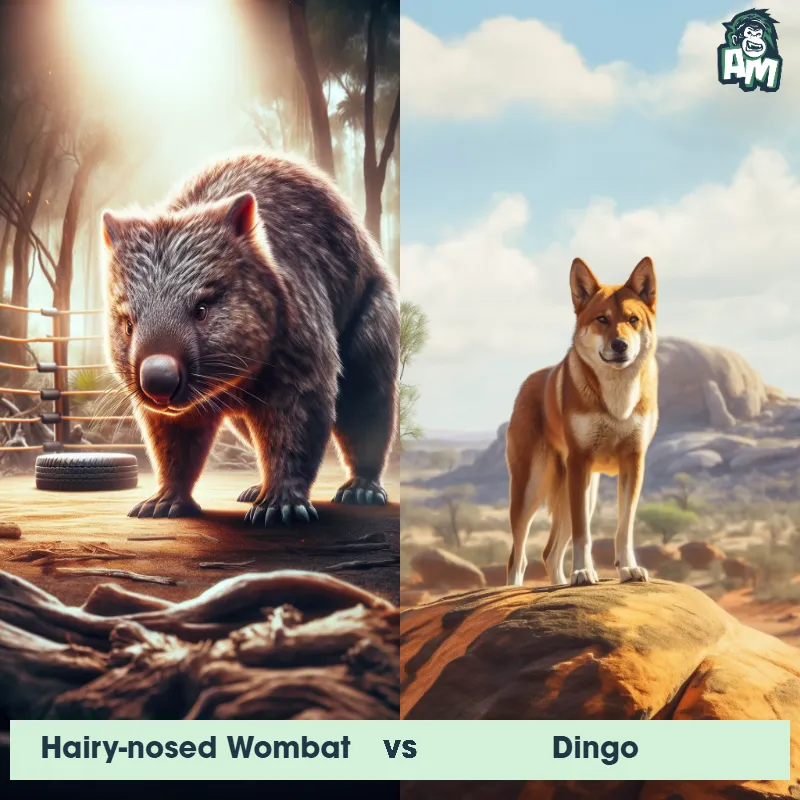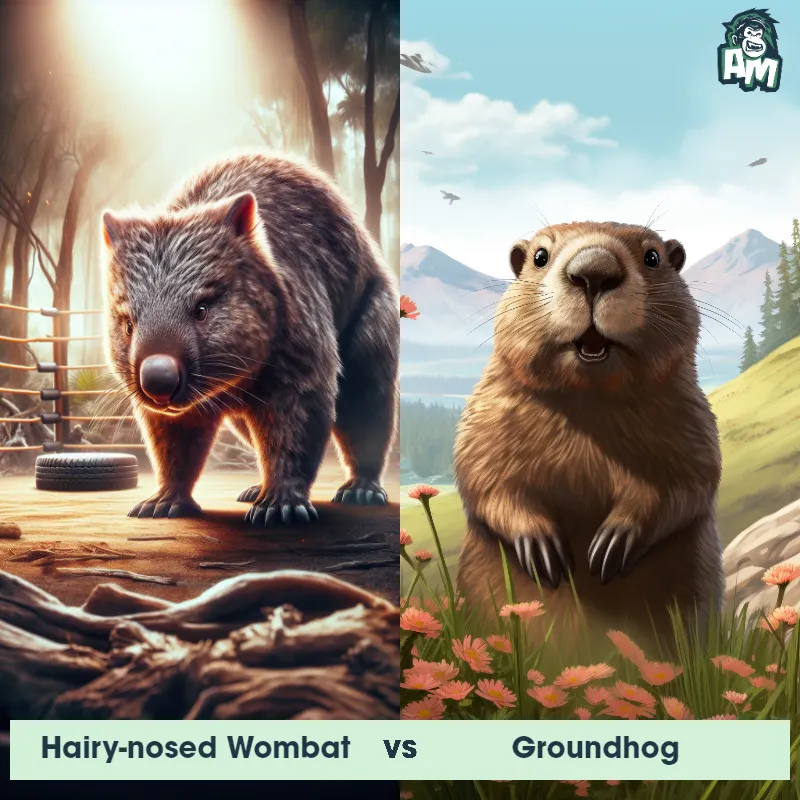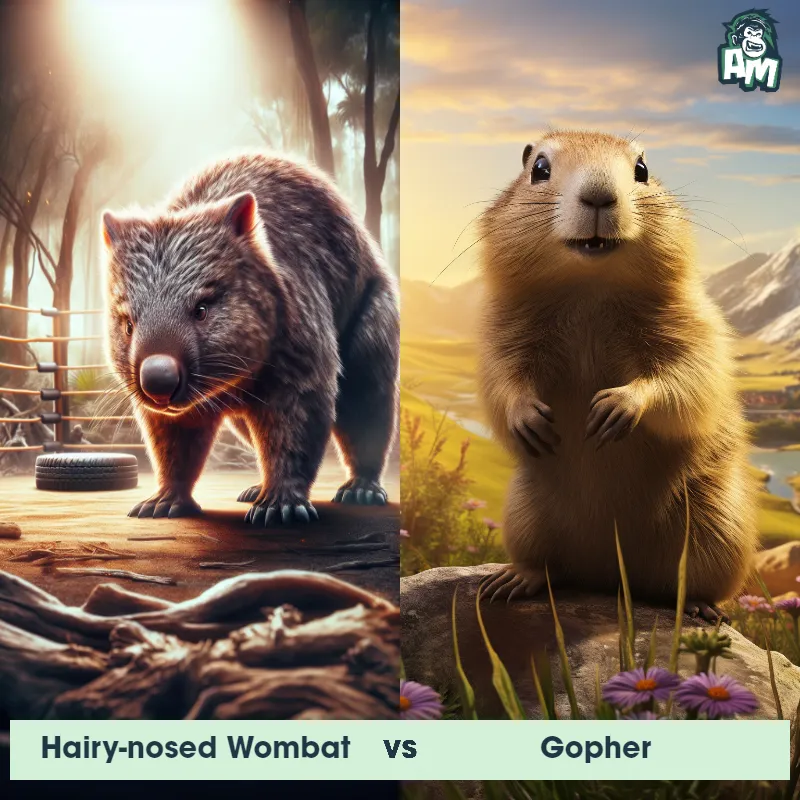Hairy-Nosed Wombat vs CapybaraSee Who Wins

Ladies and gentlemen, we have a thrilling matchup tonight between a Hairy-Nosed Wombat and a Capybara. Both of these animals are known for their defensive capabilities, but only one will come out on top tonight.
Contender 1: Hairy-Nosed Wombat
The Hairy-Nosed Wombat, also known as the Northern Hairy-Nosed Wombat, is a large marsupial found in Australia. It has a stocky build with short, strong limbs and a broad head. This species is characterized by its distinctive hairy nose and large, strong claws, which it uses for digging burrows. The fur is dense and coarse, ranging in color from sandy-brown to reddish-brown. Hairy-Nosed Wombats are nocturnal creatures and are known for their exceptional digging ability, constructing complex burrow systems that provide shelter and protection.
Fun Fact: The Hairy-Nosed Wombat is one of the rarest mammal species in the world, with estimates suggesting there are less than 200 individuals remaining in the wild.
Contender 2: Capybara
The Capybara, also known as Hydrochoerus hydrochaeris, is the largest rodent in the world. They are native to South America and are semi-aquatic creatures that spend a significant amount of time in water. Capybaras have a stocky, barrel-shaped body with a short head, small ears, and eyes positioned high on their head. They have webbed toes and can even close their ears and nostrils when fully submerged. Closely resembling a giant guinea pig, they have short, coarse fur that can vary in color from reddish-brown to gray, and their front teeth continue to grow throughout their lifespan.
Fun Fact: A fascinating fact about Capybaras is that they are highly social animals and are known to form close-knit family groups. They live in large herds of up to 100 individuals, comprising several adult males, females, and offspring. These herds have a hierarchical structure, with a dominant male leading the group and defending his territory and harem of females.
Matchup Stats
| Hairy-Nosed Wombat | Capybara | |
|---|---|---|
| Size | 35 inches (90 cm) | About 1.2 meters (3.9 feet) in length |
| Weight | 55 pounds (25 kg) | Around 50-65 kilograms (110-143 pounds) |
| Speed | 25 mph (40 km/h) | 22 mph (35 km/h) |
| Key Strength | Powerful jaws | Powerful jaws and strong legs for defense |
| Biggest Weakness | Limited mobility/agility | Less agile on land compared to in water |
Current Votes
Hairy-Nosed Wombat vs Capybara
See Who Wins
View More Matches
Looking For More?
Similar Matches
Scientific Stats
| Hairy-Nosed Wombat | Capybara | |
|---|---|---|
| Scientific Name | Lasiorhinus krefftii | Hydrochoerus hydrochaeris |
| Family | Vombatidae | Caviidae |
| Habitat | Grassland and eucalyptus forest | Semi-aquatic, found in wetlands and grassy areas near water bodies. |
| Geography | Australia | Native to South America, specifically found in countries such as Brazil, Venezuela, Colombia, and Argentina |
| Diet | Herbivorous, mainly grasses and roots | Herbivorous, primarily feeding on grasses and aquatic plants. |
| Lifespan | 10 years - 15 years | 10 years - 12 years |
Key Differences between Hairy-Nosed Wombat and Capybara
- Habitat: Hairy-Nosed Wombats are found only in Australia, primarily in arid and semi-arid regions, while Capybaras are native to South America, particularly in wetlands and grassy areas near water.
- Color: The Hairy-Nosed Wombat's fur is dark brown-to-black in color, while the Capybara has a much lighter brown fur with a yellowish color on its underside.
- Social Behavior: Hairy-Nosed Wombats are solitary creatures and are rarely seen in groups, unlike the highly social Capybaras, which live in large family groups of up to 100 individuals.
- Tail: The Hairy-Nosed Wombat has a very short, stubby tail, barely visible, while the Capybara has a longer, slender, and slightly hairless tail.
- Size: The Hairy-Nosed Wombat is significantly smaller, with adults averaging around 35 inches in length and weighing up to 44 pounds, whereas the Capybara is much larger, reaching lengths of over 4 feet and weighing up to 140 pounds.
- Ears: The Hairy-Nosed Wombat has small, round ears, close to its head, whereas the Capybara has larger, oval-shaped ears that are more prominent.



